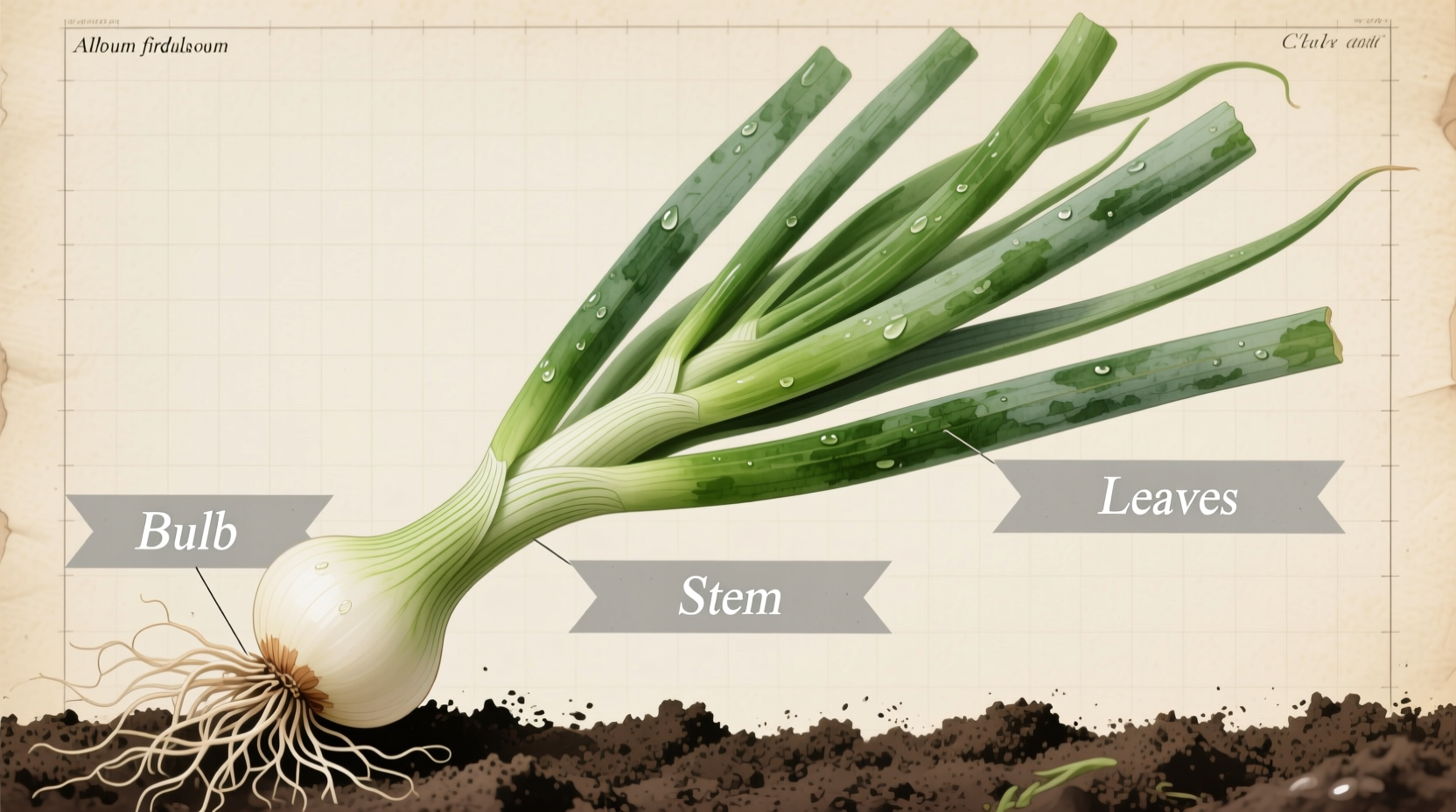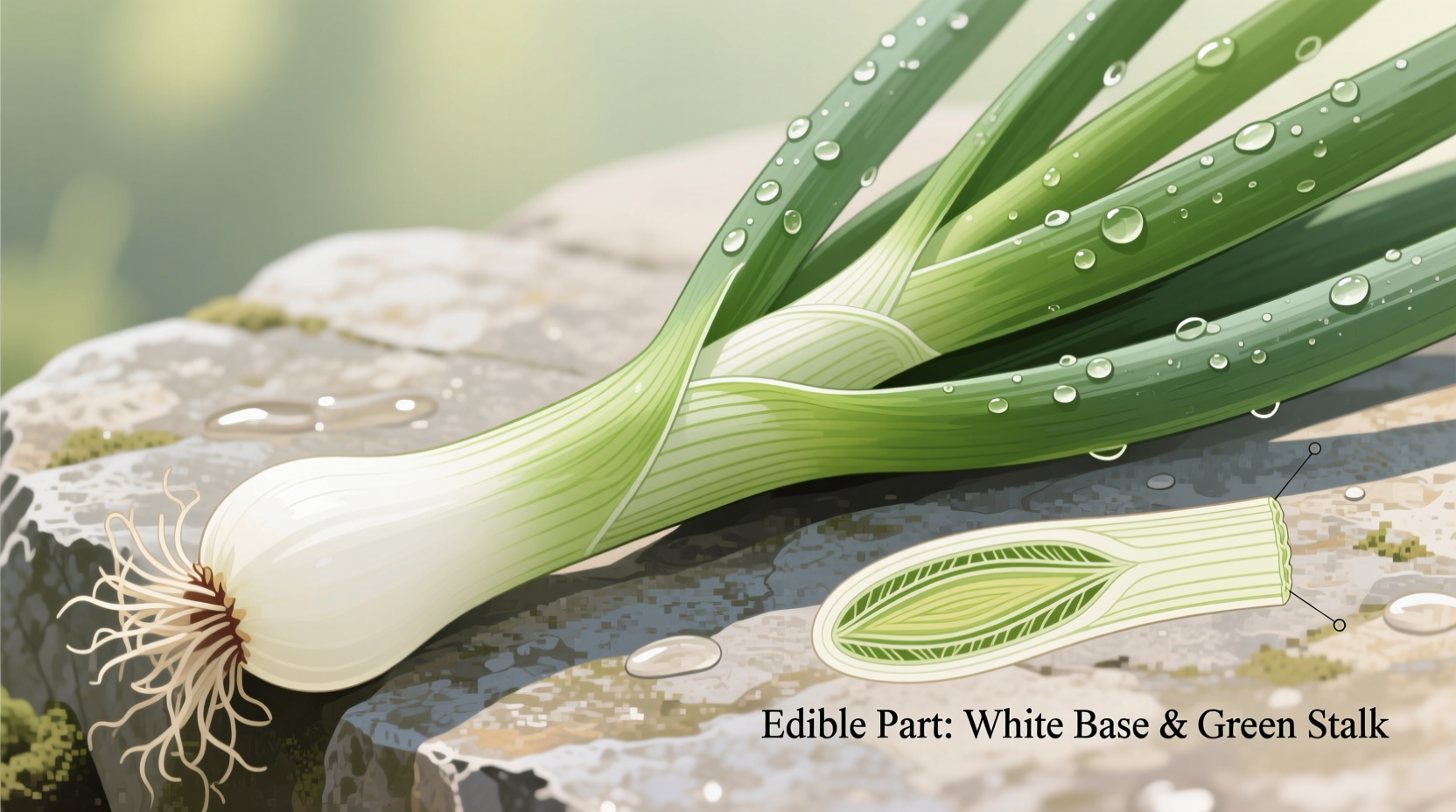You can eat almost the entire green onion, including both the white bulb and green stalks—only the very root tips should be discarded. The white and light green sections offer a stronger, pungent flavor ideal for cooking, while the dark green tops provide a milder taste perfect for garnishes. Proper preparation ensures zero waste and maximum flavor in your dishes.
Green onions, also known as scallions, are kitchen staples that add vibrant flavor to countless dishes. Yet many home cooks wonder exactly which parts are edible and how to best utilize each section. Understanding the anatomy and flavor profile of green onions transforms how you incorporate them into your cooking—maximizing both taste and reducing food waste.
Green Onion Anatomy Explained
Before diving into preparation techniques, let's examine the different components of a typical green onion:
| Part of Green Onion | Appearance | Flavor Profile | Best Culinary Uses |
|---|---|---|---|
| White Bulb | Round, slightly bulbous base | Strongest, most pungent flavor | Sautéing, stir-fries, soups, bases for sauces |
| Light Green Stalk | Transition zone between white and dark green | Moderate flavor, balanced intensity | Cooking applications requiring subtle onion flavor |
| Dark Green Tops | Vibrant green, hollow tubes | Mildest, grassy flavor | Garnishes, salads, finishing touches |
| Root Tips | Thin, stringy white fibers | Bitter, unpleasant taste | Discard (compost if possible) |
How to Properly Prepare Green Onions
Follow these professional chef-recommended steps for optimal results:
- Wash thoroughly under cold running water, separating the layers to remove any trapped dirt
- Trim the roots by cutting 1/4 inch above the very tip of the white bulb
- Inspect for damage and remove any slimy or discolored sections
- Store properly in a jar with an inch of water in the refrigerator, covered with a plastic bag

Maximizing Flavor in Your Cooking
The flavor intensity of green onions varies significantly from root to tip, creating opportunities for strategic culinary applications:
For cooked dishes: Use the white and light green portions, which withstand heat better and provide that characteristic onion flavor. Add them early in the cooking process to mellow their sharpness. According to culinary research from the Culinary Institute of America, the white sections contain higher concentrations of allyl sulfides—the compounds responsible for onion's pungent flavor that transform beautifully when heated.
For raw applications: Reserve the dark green sections for garnishes, salads, or as a finishing touch. Their milder flavor won't overpower delicate dishes. Food scientists at UC Davis have documented that the chlorophyll-rich green tops contain different flavor compounds that remain more stable when raw.
Common Green Onion Mistakes to Avoid
Even experienced cooks sometimes make these errors:
- Discarding usable portions – Only the very root tips (about 1/4 inch) should be thrown away
- Improper storage – Keeping them loose in the refrigerator causes rapid wilting
- Using all parts interchangeably – The white and green sections have distinct flavor profiles requiring different applications
- Chopping inconsistently – Uniform cuts ensure even cooking and presentation
When Certain Parts Aren't Suitable
While nearly all green onion parts are edible, specific culinary contexts create limitations. The white bulb's strong flavor can overwhelm delicate dishes like egg salads or cream-based soups when used raw. Conversely, the dark green portions lack sufficient flavor intensity to stand up in long-cooked dishes like stews or braises. Understanding these context boundaries helps you make better ingredient decisions.
Food safety experts at the USDA confirm that green onions remain safe to eat when properly stored and prepared. However, they note that sprouting green onions develop a tougher texture and more intense flavor that may not suit all recipes. The National Onion Association recommends using green onions within 7-10 days of purchase for optimal flavor and texture.
Zero-Waste Cooking Tips
Transform your green onion preparation into a zero-waste process:
- Store trimmed roots in water to regrow your own green onions
- Freeze excess chopped portions in oil for future cooking
- Use tougher outer layers in vegetable stock
- Create onion-infused oil with trimmings











 浙公网安备
33010002000092号
浙公网安备
33010002000092号 浙B2-20120091-4
浙B2-20120091-4